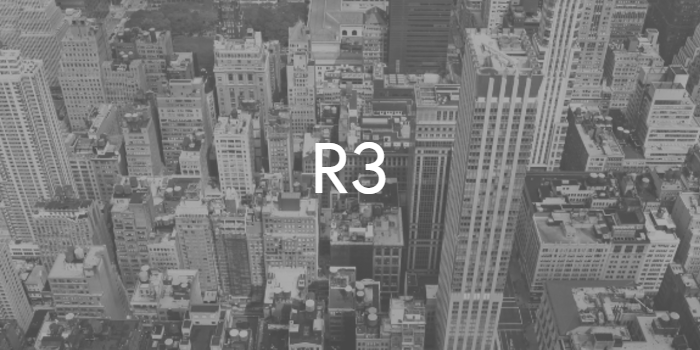
Banks pour $107M into blockchain consortium R3
By Penny Crosman for American Banker
R3, the bank consortium that’s building a distributed ledger specifically for financial institutions, received its first wave of funding Tuesday morning — a cool $107 million from 40 of its backers.
The money should give a boost to R3, which has suffered several defections in recent months. JPMorgan Chase, Goldman Sachs, Banco Santander, Morgan Stanley and National Australia Bank have pulled out of the group.
“I think it’s a massive vote of confidence,” said Charley Cooper, managing director at R3. “It’s a lot of money. And unlike venture capitalist firms that sprinkle money around various places and hope that something hits, bank investment committees and investor groups are far more diligent and exacting in the type of review they do before they’re willing to cut a check.”
Although R3 has lost some major names, it has added members, too. The group currently has 84 members, most of which are financial institutions.
The members involved in the raise include Bank of America Merrill Lynch, Wells Fargo, Citigroup, TD Bank, BBVA, Bank of New York Mellon, Northern Trust, HSBC, Barclays, UBS, Intel and Temasek.
“Having been an active part of the R3 journey from the very start, it is rewarding to see the initiative and the technology taking shape,” said Hyder Jaffrey, head of strategic investment and fintech innovation at UBS Investment Bank. “From the outset, marketwide engagement has always been a key factor to realize the benefits of this technology for both our markets and clients. R3 is now uniquely positioned to deliver on this promise.”

To be sure, banks are hedging their bets on distributed ledger technology. Many of the bank members of R3 are also members of the two other largest distributed ledger technology groups, Hyperledger and the Enterprise Ethereum Alliance. BBVA and BNY Mellon are members of all three groups. UBS and ING Group are in R3 and the Enterprise Ethereum Alliance. JPMorgan belongs to Hyperledger and the Enterprise Ethereum Alliance and also has its own distributed ledger, called Quorum, which is based on Ethereum.
And the landscape for the development of blockchain in banking is continually evolving. On Monday, 84 companies joined the Enterprise Ethereum Alliance, which now has 116 members, and eight joined Hyperledger, bringing its total to 142 members.
Much of the $107 million will go into hiring — mostly technologists, platform engineers, designers and other software specialists, Cooper said. R3 currently has a staff of 110 people.
These added technologists should speed up the development of R3’s Corda open source platform and an enterprise-grade version of the software that will be announced later this year. They’ll also continue working with partners like Calypso Technology and HQLAX to build specific applications for the Corda platform.
“We will have various pieces of the platform and the network itself stood up over the next couple of months,” Cooper said. “The goal is to have at least one commercial product ready to go and live by the end of the year.”
Tuesday’s raise encompasses the first two tranches of a three-part effort, Cooper explained. The first two were reserved for members that joined R3 in 2015 and 2016, respectively. The early members voted to let in Intel and Temasek, a Singapore-based sovereign fund. The third phase, which will be open to nonmembers as well as members, is expected to be carried out later this year.
R3 would not disclose how much each bank put in, but Cooper said that no one bank was allowed to invest a significantly greater amount than the others.
“We wanted to encourage as broad and diverse an investor base as possible,” Cooper said. “And we didn’t want to be in a position where any one or two banks were able to exercise outsize influence or control. If you only raise money from five or 10 banks, you end up taking significant chunks from particular institutions, which then try to drive the organization to their own interests.”
The membership is global: About a third of members are in the Americas, a third in Europe, the Middle East and Africa, and a third from Asia Pacific.
“That was very intentional and by design,” Cooper said. “We wanted to encourage as global a consortium as possible because there’s always a risk that you become too country-focused. Then you end up making decisions that might work for that one country’s markets.”





